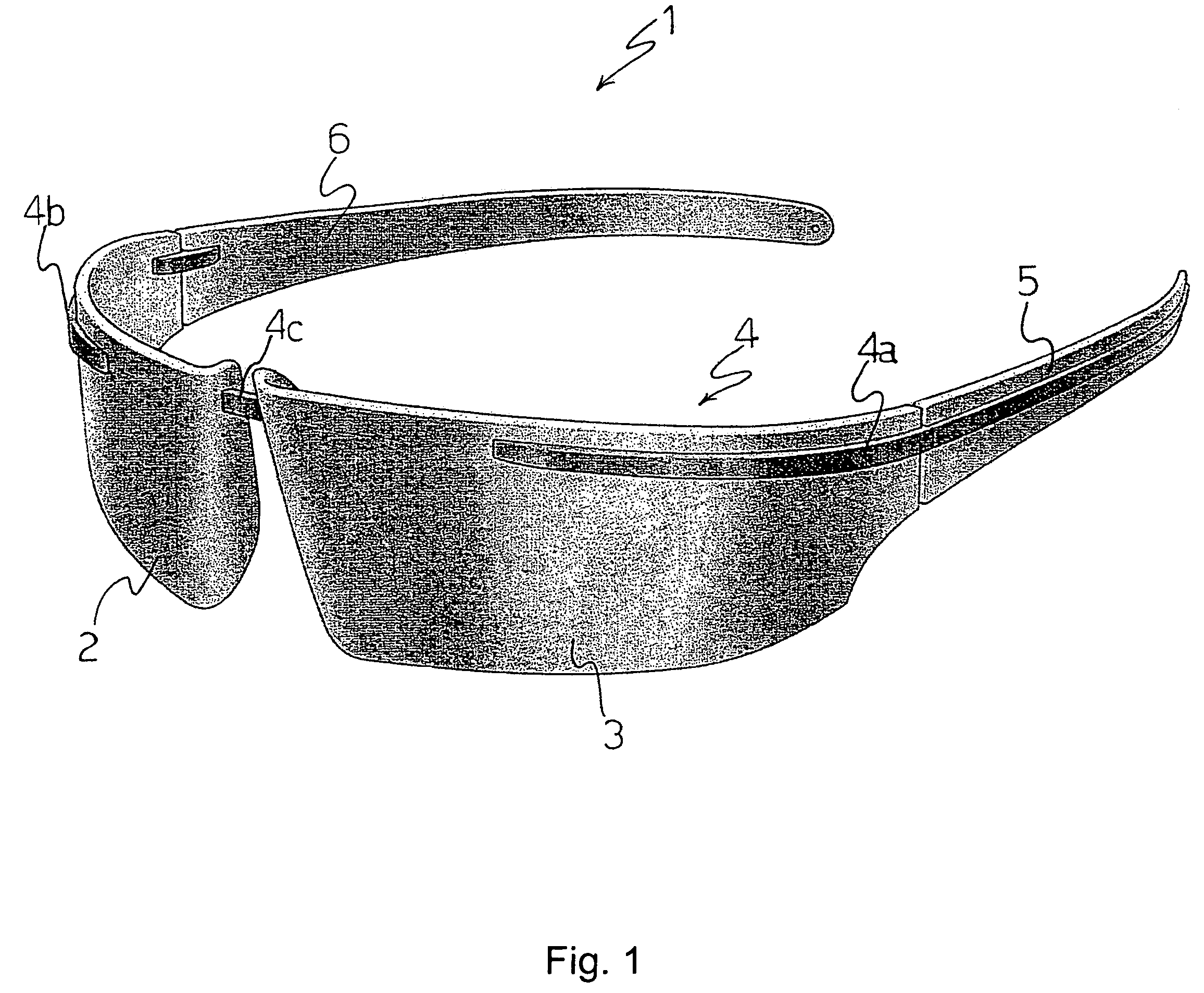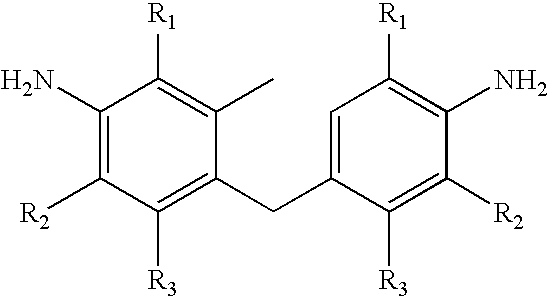Soft optical element for use in eye-protecting devices
a technology of optical elements and eye protection devices, applied in the field of optical elements, can solve the problems of unsatisfactory use of known optical elements made of rigid materials, unsatisfactory impact resistance of optical elements made of cr39®, and inability to meet the requirements of outdoor use, so as to improve the comfort of wearers and protect the face and eyes of wearers
- Summary
- Abstract
- Description
- Claims
- Application Information
AI Technical Summary
Benefits of technology
Problems solved by technology
Method used
Image
Examples
example 1
[0099]Twenty lenses having a thickness of about 2 mm and comprising a transparent polyurethane material were obtained by casting using conventional glass molds. More specifically, these lenses were obtained using the following ingredients and procedures.
[0100]A clean reactor equipped with heating, cooling, vacuum, dry N2 were provided, and an agitator was charged with DESMODUR® W (4,4′-dicyclohexylmethane diisocyanate containing 20% of the trans, trans isomer). The agitator was turned on and the temperature of the DESMODUR® W was increased to about 71° C.
[0101]A mixture comprising polytetramethylene ether glycol (PTMEG) having a weight average molecular weight of about 1000 and polytetramethylene ether glycol (PTMEG) having a weight average molecular weight of about 650, as the hydroxy-containing intermediate, was prepared. The PTMEG mixture was added to the DESMODUR® W in an equivalent ratio of 1.90–2.10 NCO groups to 1.0 OH group.
[0102]Heat and vacuum were turned on. When the temp...
example 2
[0106]Twenty lenses comprising a transparent polyurethane material were prepared according to the process of Example 1, using polytetramethylene ether glycol (PTMEG) having a weight average molecular weight of about 1000 as the hydroxy-containing intermediate. The PTMEG was added to the DESMODUR® W in an equivalent ratio of 1.45–1.65 NCO groups to 1.0 OH group. The prepolymer was reacted with a 70:30 equivalent mixture of diethylene toluenediamine (DETDA) and methyl diisopropyl aniline (M-DIPA) as the diamine curing agent, which was added to the prepolymer in an equivalent ratio of 0.98–1.0 NH2 groups to 1.0 NCO groups. The cured polymer was cast into a lens having a thickness of about 2 mm.
[0107]The lenses were then tested to measure their mechanical and optical characteristics. The results of the tests are shown in Table 1 hereinbelow.
[0108]All of the lenses, once mounted on the frame, displayed optimum softness and elasticity characteristics and absorbed, without cracks or damage...
example 3
[0109]Twenty lenses comprising a transparent polyurethane material were prepared according to the process of Example 1, using E-caprolactone polyesters as hydroxy-containing intermediates.
[0110]A mixture comprising diethylene glycol-initiated polycaprolactones, TONE® 0240 (equivalent weight about 1000) and TONE® 0230 (equivalent weight about 625) both available from Dow Chemical, was prepared. A sufficient amount of the TONE® 0230 was added to the TONE® 0240 such that when melted and mixed at about 80° C., an equivalent weight of about 950 was achieved.
[0111]The same process as Example 1 was used to prepare the prepolymer, except that the XP-7041E was melted at about 80° C. and thoroughly mixed prior to use.
[0112]The E-caprolactone polyesters were added to the diisocyanate (XP-7041E) in an equivalent ratio of about two NCO groups to one OH group.
[0113]The curing agent used in this example was diethylene toluenediamine (DETDA). The ratio of NH2 groups to NCO groups was maintained at ...
PUM
| Property | Measurement | Unit |
|---|---|---|
| elongation at break | aaaaa | aaaaa |
| elongation at break | aaaaa | aaaaa |
| elongation at break | aaaaa | aaaaa |
Abstract
Description
Claims
Application Information
 Login to View More
Login to View More - R&D
- Intellectual Property
- Life Sciences
- Materials
- Tech Scout
- Unparalleled Data Quality
- Higher Quality Content
- 60% Fewer Hallucinations
Browse by: Latest US Patents, China's latest patents, Technical Efficacy Thesaurus, Application Domain, Technology Topic, Popular Technical Reports.
© 2025 PatSnap. All rights reserved.Legal|Privacy policy|Modern Slavery Act Transparency Statement|Sitemap|About US| Contact US: help@patsnap.com



